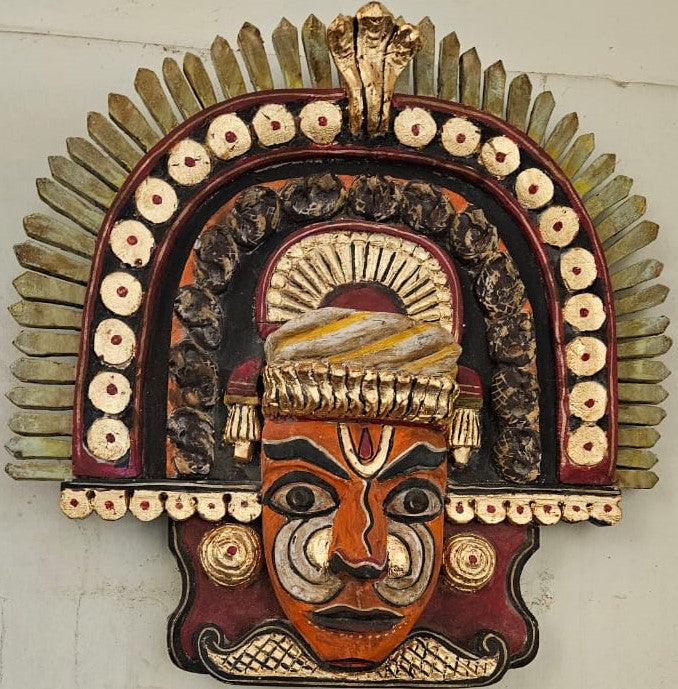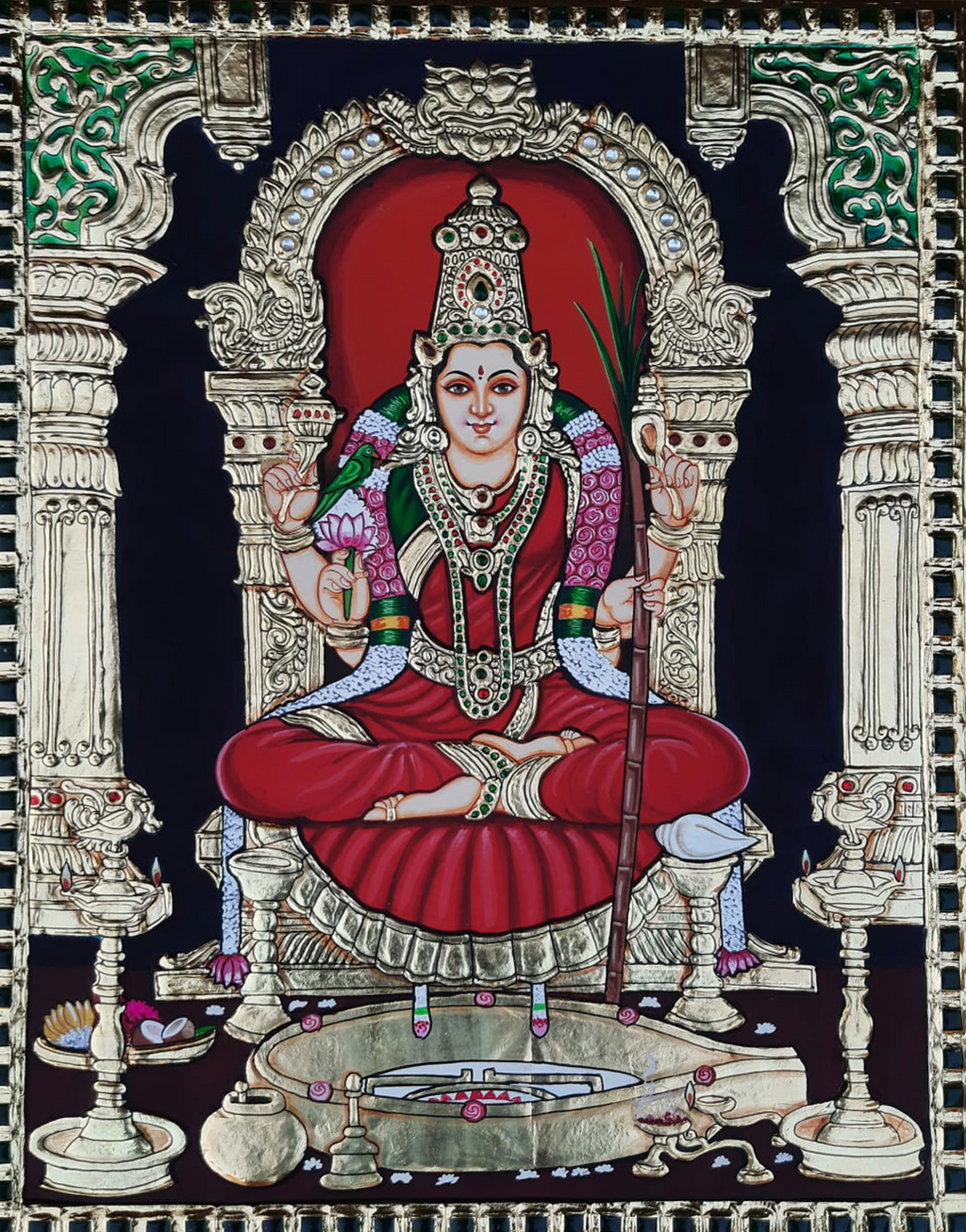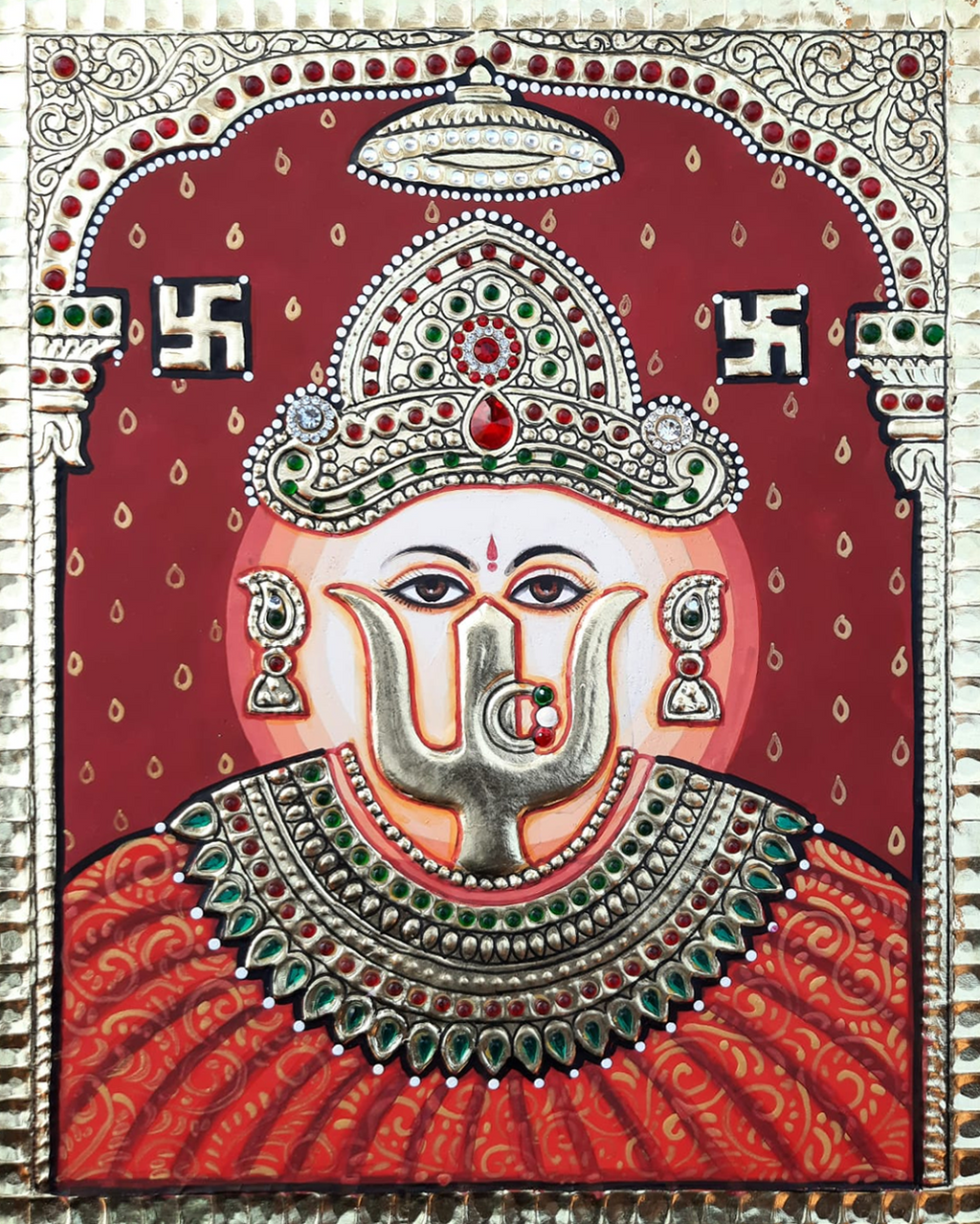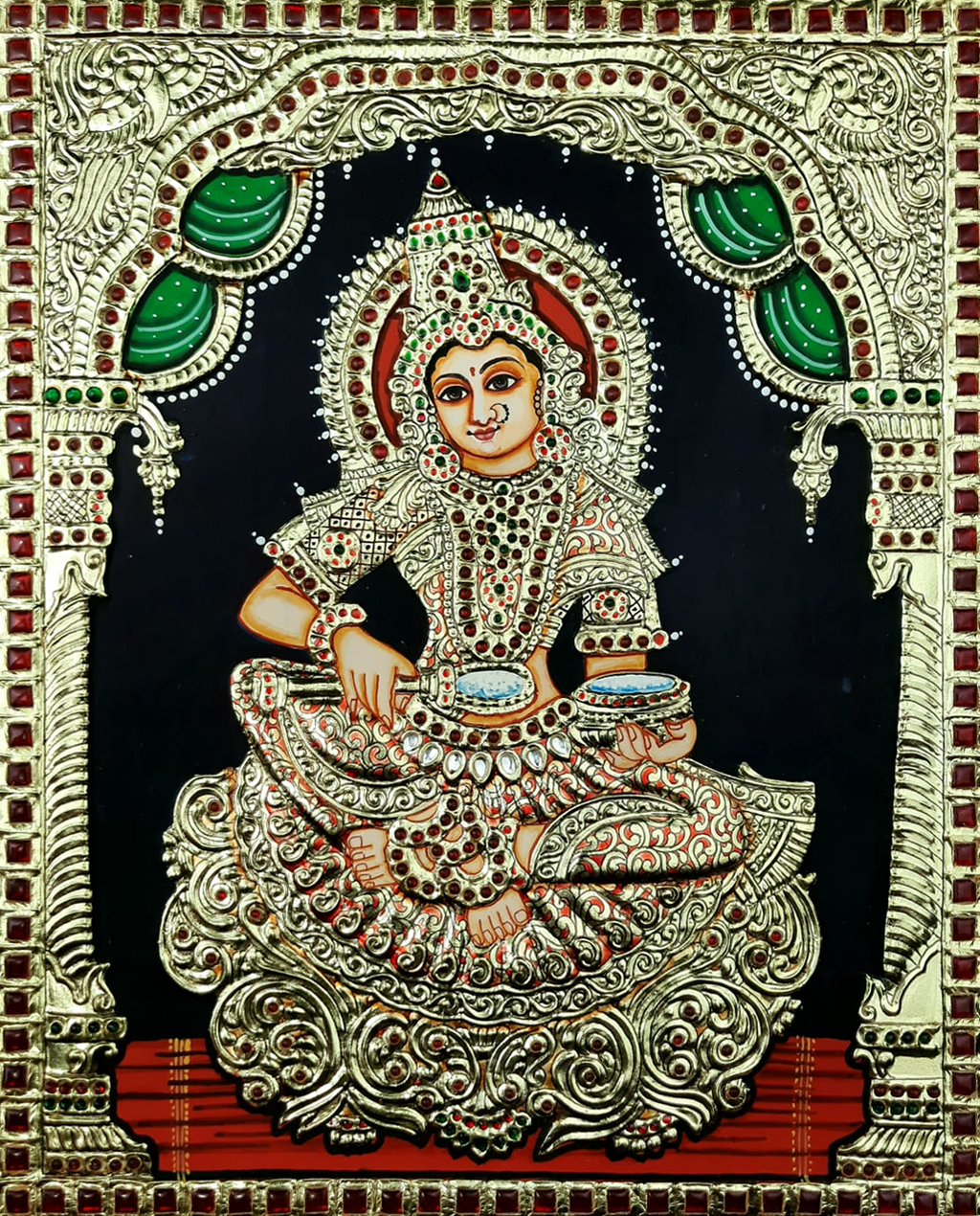
- AUTHENTIC
HANDMADE
ARTWORKS

- INTERNATIONAL
SHIPPING

- CERTIFICATE OF
AUTHENTICITY
View

- SECURE
CHECKOUT

- WARRANTY

- SUPPORT
ARTISANS
![]() Earn upto 225,000 Points on purchase of this product.
Earn upto 225,000 Points on purchase of this product.
![]() Get upto 10% OFF on Live Workshops when sign up for 2 or more workshops.
Get upto 10% OFF on Live Workshops when sign up for 2 or more workshops.
![]() Get 10% OFF coupon code for Art Kits signing up for Masterclass or Live Workshop.
Get 10% OFF coupon code for Art Kits signing up for Masterclass or Live Workshop.
About the Artwork +
This exquisite antique wooden archway by Sheratone is a prime example of the Tanjore school of art, a traditional South Indian style known for its rich colors, intricate gesso work, and opulent use of gold foil. Acting as a timeless portal, the archway is meticulously adorned with a rich tapestry of Hindu iconography celebrating Lord Vishnu.
The archway's interior presents a breathtaking visual narrative centered on Lord Vishnu. At the very top, he is depicted in his Anantashayana pose, reclining on the cosmic serpent Sheshnaag, with his consort, Lakshmi, at his feet. Below, Vishnu is shown standing on a throne, holding his four attributes: the conch, discus, mace, and a lotus. Surrounding these central figures are smaller panels depicting the Dashavataras, Vishnu's ten incarnations, including Matsya, Kurma, Varaha, Rama, and Krishna. The inner doors also feature Vishnu's loyal devotees, Garuda and Hanuman, carrying offerings.
The exterior of the archway is dedicated to the divine presence of Narada Muni and Tumburu. On the left, the divine sage Narada, a great devotee of Lord Vishnu, is shown with his veena. On the right stands the celestial musician Tumburu, known for his horse-headed form and musical prowess. Mythology often pits the two in musical competitions to prove who is the greatest singer of Vishnu's glories.
The entire structure is a masterful showcase of color and architectural symbolism. A vibrant palette of carmine red, royal blue, emerald green, and saffron is enhanced by glimmering gold foil and three-dimensional gesso work. The archway's shape and design evoke a sacred space, transforming a physical structure into a profound and beautiful threshold to the divine.
Authentication and Certification +
Each of our artworks are hand painted by master artists across India. We provide a digital authentication certificate with this artwork signed by the artist which will be sent over email after 3-4 days of delivery of the artwork.
View Sample Here
Sizes, Framing and Customisation +
The sizes mentioned are excluding the borders of the artwork. Frames shown are for visual representation only and are not included with the artwork.
Customisation
Most artworks can be customised in terms of colours, size and elements to fit your requirements.
For custom artwork orders, please use the WhatsApp chat below or email us at wecare@memeraki.com to discuss your requirements in more detail.
Framing Services
We offer framing services on demand at additional framing and shipping costs. If you wish to get your artwork framed, please reach out to us on WhatsApp or email.
Shipping and Taxes +
We ship worldwide.
Domestic Orders
All prices are inclusive of GST and applicable Indian taxes.
- We offer free shipping on orders above ₹999 for all artworks, except Lippan, Terracotta and Thikri.
- A flat shipping rate of ₹249 applies to orders below ₹999.
Lippan, Terracotta and Thikri
Shipping is charged on a per-kilogram basis, due to the delicate and bulky nature of these items.
International Orders
- A flat shipping charge of ₹4,000 applies to international artwork orders.
- Customs duties, taxes, or import charges in the buyer’s country are not included and must be borne by the buyer.
- Shipping rates for Lippan, Terracotta and Thikri artworks will be calculated based on weight.
Additonal Shipping Charges
Extra charges may be applicable for both domestic and international deliveries in the following cases:
- If the article requires additional packaging (such as a wooden crate) to ensure safe shipping due to its delicate nature.
- Custom-framed artworks.
- Artworks where shorter side exceeds 36 inches or Decor items with any side over 35 inches.
- If you request express shipping. Contact support to check availability.
- The order contains more than two different product types.
You can proceed with your purchase, and our team will contact you to confirm any applicable additional shipping charges before processing your order. Alternatively, reach out to us on WhatsApp or email, and we'll assist you in completing your purchase with the final pricing.
Delivery Timelines and Returns +
All artworks are handmade and couriered securely packed in a tube.
This artwork will be Made to Order and will take 2-3 weeks to be made and shipped. Returns are not applicable on Made To Order artworks.
Once your order is placed, our team stays in constant communication with the artist to track the progress and ensure the quality of your order. You will receive regular updates from us throughout this process.
All MeMeraki artworks are hand-painted. In rare occasions, artist may face delays due to weather, health, prior commitments or force majeure. Our team will reach out to you with revised timelines in case of such delays. We appreciate your understanding and patience in such situations.
Colour Disclaimer+
All artworks on the website are hand painted from scratch by our master artists. This makes every artwork absolutely unique and the actual colour and overall artwork may vary slightly from the artwork image posted here.





 Share
Share


















